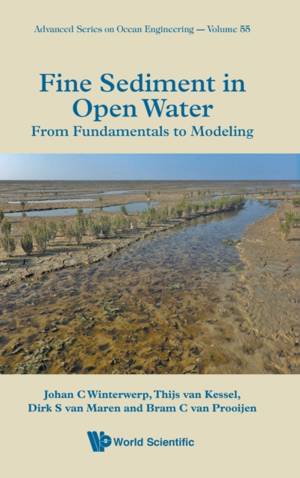
- Afhalen na 1 uur in een winkel met voorraad
- Gratis thuislevering in België vanaf € 30
- Ruim aanbod met 7 miljoen producten
- Afhalen na 1 uur in een winkel met voorraad
- Gratis thuislevering in België vanaf € 30
- Ruim aanbod met 7 miljoen producten
Zoeken
Fine Sediment in Open Water: From Fundamentals to Modeling
Johan C Winterwerp, Thijs Van Kessel, Bas Van Maren, Bram C Van Prooijen
€ 310,45
+ 620 punten
Omschrijving
Fine Sediment in Open Water is mainly written for professional engineers working in estuaries and coastal systems. It provides the basis for a fundamental understanding of the physical, biological and chemical processes governing the transport and fate of fine sediment in open water and explains how this understanding can steer engineering studies with numerical models. This is a unique treatment of processes at a variety of spatial and temporal scales, from the micro-scale (colloid scale) to system-wide scales, and from intra-tidal time periods to decades.Beginning with the processes governing the transport and fate of fine sediment in shallow open water, the first eight chapters are dedicated to the hydrodynamic, soil mechanics and biological processes which determine fine sediment concentrations in the water column, in/on the bed and the exchange of sediment between bed and water column. The next two chapters treat the net fluxes of fine sediment as a function of asymmetries in forcing and sediment properties. These fundamental processes form the basis for the subsequent chapters on modeling in which the governing equations are presented, and tools are provided to aggregate and parameterize the various processes elaborated in the first eight chapters. Further, any numerical model study should be based on a conceptual model, as illustrated in the final five chapters, which provide examples of numerical modeling studies on the transport and fate of fine sediment in a coastal sea, an estuary, a tidal river, a lake, and around and within a harbor basin.Related Link(s)
Specificaties
Betrokkenen
- Auteur(s):
- Uitgeverij:
Inhoud
- Aantal bladzijden:
- 644
- Taal:
- Engels
- Reeks:
Eigenschappen
- Productcode (EAN):
- 9789811243615
- Verschijningsdatum:
- 2/12/2021
- Uitvoering:
- Hardcover
- Formaat:
- Genaaid
- Afmetingen:
- 152 mm x 229 mm
- Gewicht:
- 1020 g

Alleen bij Standaard Boekhandel
+ 620 punten op je klantenkaart van Standaard Boekhandel
Beoordelingen
We publiceren alleen reviews die voldoen aan de voorwaarden voor reviews. Bekijk onze voorwaarden voor reviews.








